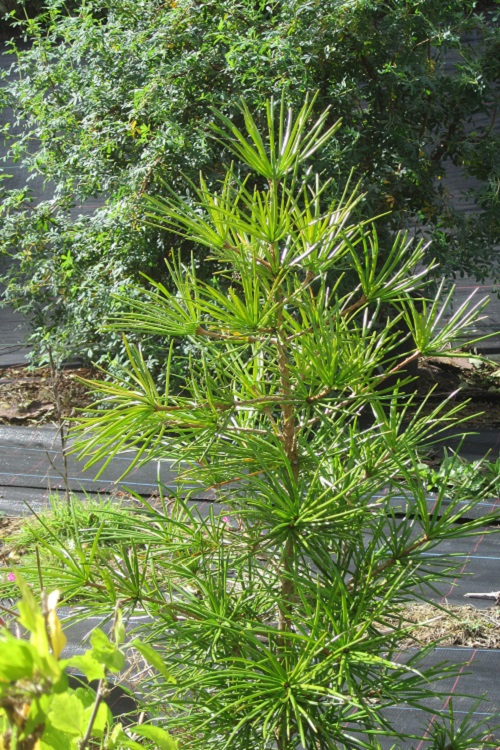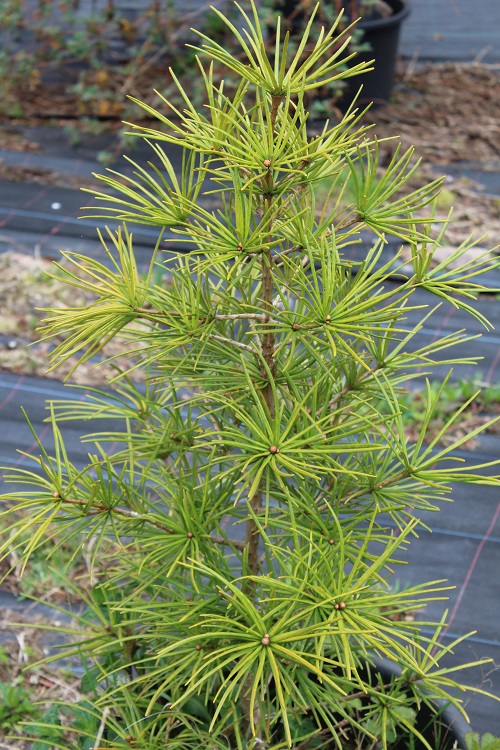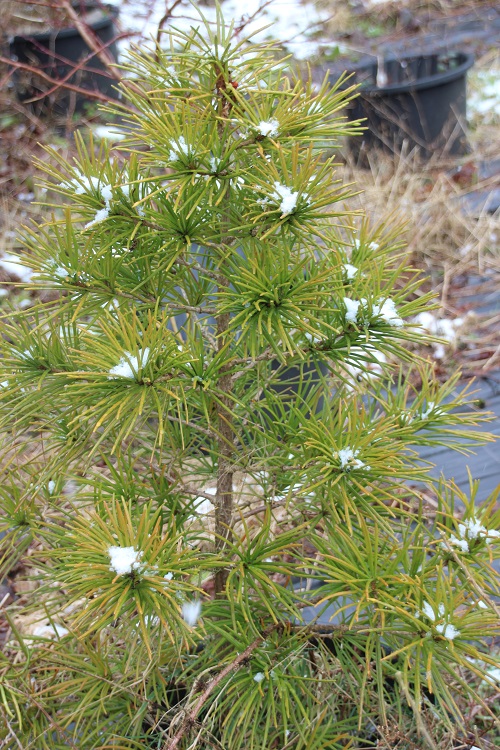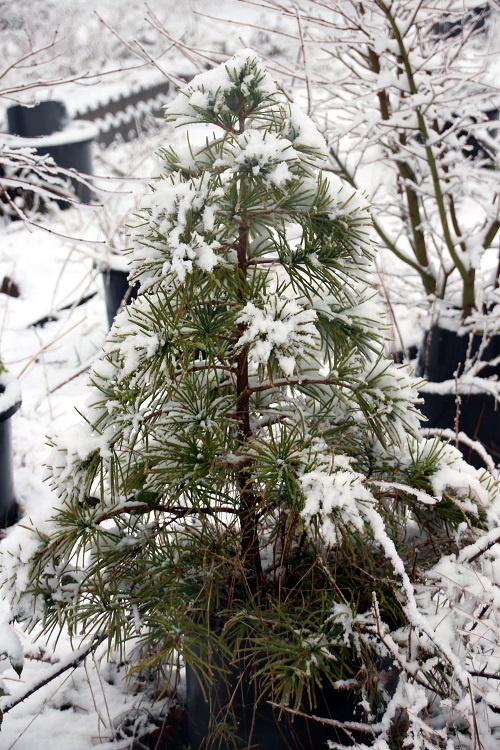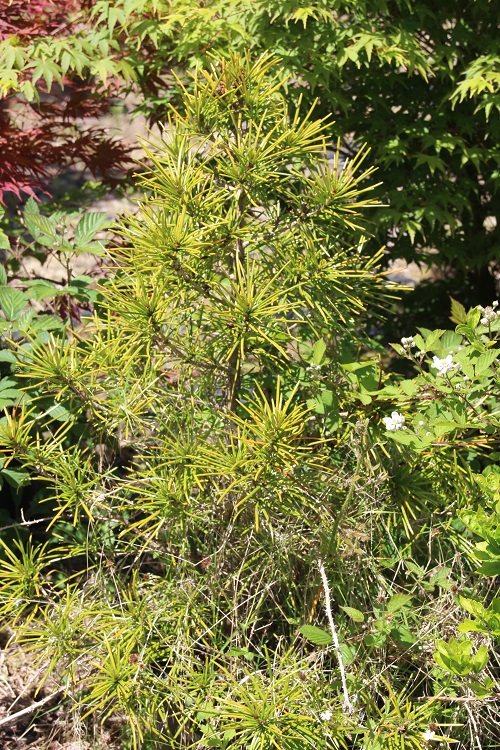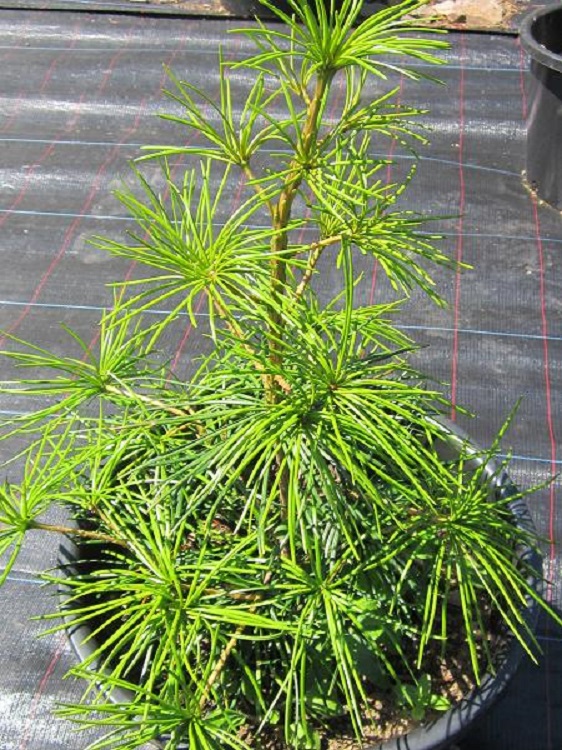 |
The Conifers are for the most part a truly tedious group of trees that burn well. Half of them have needles
that stab at hands and trunks that ooze resin that never comes off. The other half have scales and fall over
in strong winds. As a group they attract the attention of some truly tedious people and it is not currently acceptable to set light to them. With increasing global overpopulation that may change. Fortunately both groups have a scattering of eccentrics that exhibit a mutual attraction and the eccentrics have a certain charm. The Japanese Umbrella Pine is known from the fossil record to be at least 230 million years old and is found only in Japan. I bought a small seedling because these oddities fascinate me. I grew it on in a pot for a year or two and have just planted it out. The rabbits paid a visit and damaged some of the lower branches but I doubt it was particularly tasty and they left the main trunk alone. Trees and Shrubs online says: Sciadopitys verticillata is one of the most fascinating of all conifers. A so-called living fossil, it sits alone, one species in one genus in its own family, with no close living relatives, but with a fossil record that can track its ancestors back some 230 million years. The peculiar arrangement of its leaves is unique among conifers, as is the production of a latex-like, non-resinous sap ... Revered in its native Japan where its timber has been highly prized, it is slow growing even in the wild where, as in gardens, it forms dense, slender, beautiful spires of lustrous dark green foliage. In Japanese culture Sciadopitys is one of the five sacred trees of Kiso, the others being Chamaecyparis obtusa, C. pisifera, Thuja standishii and Thujopsis dolabrata. In ancient feudal Japan these trees were reserved exclusively for imperial use, and any unsanctioned felling was considered a capital offence. As a wild tree Sciadopitys is distributed from central Honshu south to Shikoku and Kyushu, predominantly in the Chubu, Kinki, and Shikoku districts, with isolated populations scattered throughout Tohoku, Chugoku, and Kyushu districts. It occurs mainly in rocky, cool and moist ravines and valleys in mountainous areas over an altitudinal range of 200–1700 m asl in mixed conifer-angiosperm forests with a broad range of associates." |
|
| 22nd July 2012 | ||
